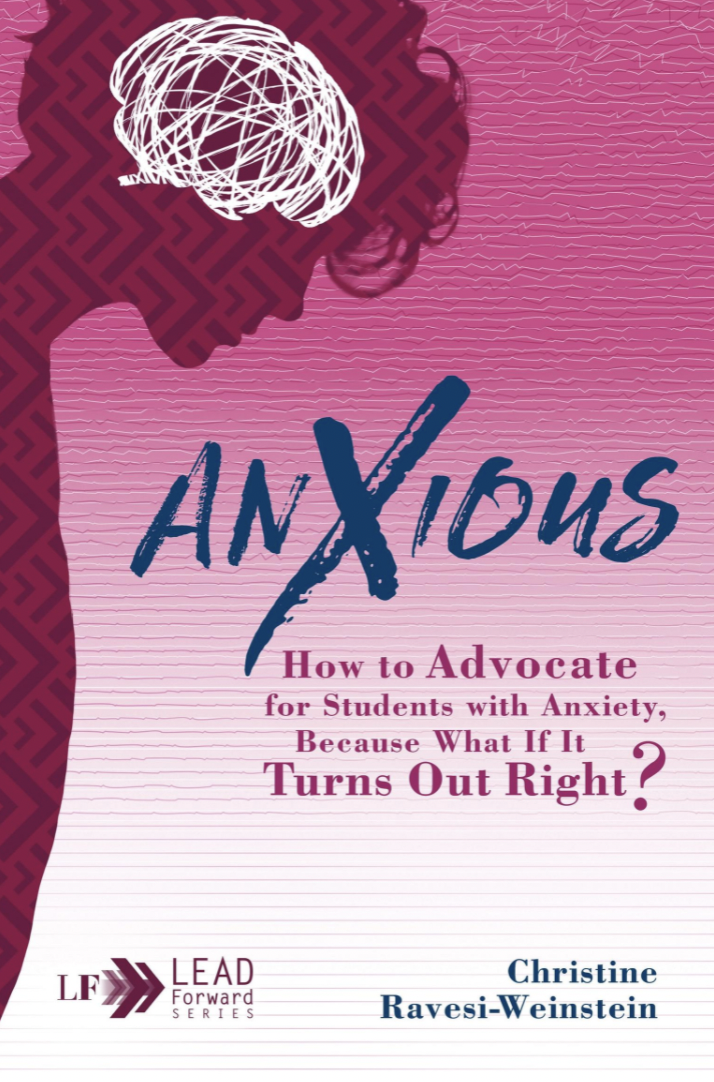Helping Students Build Lifelong Skills to Manage Anxiety
Oct 26, 2021
One of the biggest challenges for educators as they work with students is managing their ever-growing need for independence.
It starts at a tender young age. The terrible twos are rooted in the stubbornness of independence, and the toddler must do it all on their own.
This attitude never changes in most children; it simply looks different. Rather than throwing their shoes across the room because they insist they know which foot each one goes on, they skip classes because that is what will curb their anxiety about their ability to perform with perfection.
But teaching is all about showing students how. Educators must find a way to show them where they need to be, even if they are resistant.
- Advocating for students with anxiety
- Recognize when anxiety causes students to avoid assignments and skip class
- Build relationships by asking questions first
- Help students understand the body-mind connection and become self-advocates
- Create safe environments with authenticity, vulnerability, and routines
In this blog post, Ravesi-Weinstein shares ideas and new approaches to help your students build lifelong skills around managing anxiety.
Change Approaches, Not Expectations
While educators will continue to assign projects with high stakes or that require weeks, or even months, of work, they need to approach large assignments differently for anxious students.
Educators are facilitators and mentors for student growth. Show students how to be successful so they can model our example.
Students with anxiety need even more guidance. Just starting an assignment can take hours or days. Being able to rely on scheduled help along the way will help anxious students be less work-avoidant.
Anxiety is an illness that does not discriminate; it impacts students of all academic abilities. In fact, it’s the anxious students in the Honors and Advanced Placement courses that often go the most unrecognized.
Sometimes we assume that academic success means anxiety doesn’t exist. However, it can be the exact opposite: academic success means high anxiety. Many educators take the academic success of our students, a weighted GPA, an SAT score, or a class rank, to be the sole focus of student achievement.
But for many students, the emotional investment necessary for accomplishing these goals is where the real story begins.
Whether or not students are in AP classes, they must learn to avoid triggers if they’re to manage their anxiety. If they are inclined to skip work that seems like it will induce anxiety, they look at the scale and scope of a task, and rather than alter their approach, choose to eliminate the need to do it all together.
Educators can keep assigning such projects to all students, including anxious students. As we’ve seen, telling them they don’t have to do that assignment just encourages the anxiety.
But to make it more palatable for students with anxiety, here are a few alternatives to consider when it comes to teaching better habits to students, and keeping them from avoiding the work.
Refuel in pit row.
Even the highest-performing stock cars need to make pit stops before finishing a race.
During the Indianapolis 500, an IndyCar makes, on average, five stops. Of course, many variables go into the number of pit stops: fuel consumption, damage, tire wear.
Regardless, no IndyCar has yet to make it five hundred miles without stopping. Your students can’t be expected to, either. Teach students how to pare down their work into smaller goals by replacing major deadlines with manageable checkpoints.
Rather than only having a final due date, create multiple due dates throughout the project in bite-size chunks so students can manage.
Talk with, not at, students.
A teacher might think giving students general, verbal reminders of due dates and expectations would be enough to keep them on top of their assignment.
It’s also safe to assume that a teacher believed they were approachable.
But rather than leaving the decision in the hands of the students, teachers must take the initiative to make the conversation happen regularly.
Engage students in frequent group conferences as a means to check in on their progress. Designate time once a week for students to check in with their groups about where their work stands.
During this time, move through the room and talk to each group about how they’re doing. Start by asking where they are with the project. Ask what the next steps are and who will be responsible for what.
Offer your assistance; what can you do to help them accomplish the next steps? Let students know where you think they should be at the next check-in.
Engaging in these conversations with students will reduce their anxiety about talking to their teacher one on one. Regardless, real teaching and learning happen when students and teachers are actively engaged in meaningful conversations with each other. Talking with students is a powerful exercise.
“Flex” your muscles.
Students are regimented from the time they enter preschool until they graduate twelve to fourteen years later. Although routines are an effective strategy for students dealing with anxiety, educators have to allow students the opportunity to establish their own routines.
We must think outside the box and “flex” our muscles to advocate for a new approach to scheduling in our buildings and our classrooms. Include time during the day for students to address the social and emotional needs they all have.
Providing time once or twice a week for students to organize and work at their own pace will help them break down large assignments themselves.
If your school doesn’t have “flex” time built into the schedule, start by offering this time in your classroom. Ask students where they are with their work in your class, and how you can help them going forward.
Additionally, give them feedback on work they have recently done. It will motivate them further.
Creating “flex” time in your schedule allows students the opportunity to establish healthy routines and coping mechanisms during the school day.
Helping Students Move Forward
Anxiety is an exhausting battle of wills: person versus self.
Couple that with the external battle all students have with the adults around them.
We work with students who are desperate to be treated like the adults they think they are every day.
The reality is that students with anxiety are no more in control of it than they are their own lives. Educators must take students by the hand and show them how to manage the difficulties they face. It’s even more important for students with anxiety, who need to manage the triggers in their lives.
When it comes to assignments, educators need to anticipate triggers and break up tasks into smaller chunks. Assign more than just a final due date. Pace the work out for the students and give them checkpoints and pit stops to help them build endurance when the work gets difficult.
Teach the students how to do this for themselves, so they can start to manage their triggers and anxiety. Additionally, show them the supports around them; introduce them to the school support staff, and communicate to the school community that those people are there for everyone.
Show students help is available by sharing survivor stories. Tell students about people who have successfully asked for help, and encourage them to do the same.








